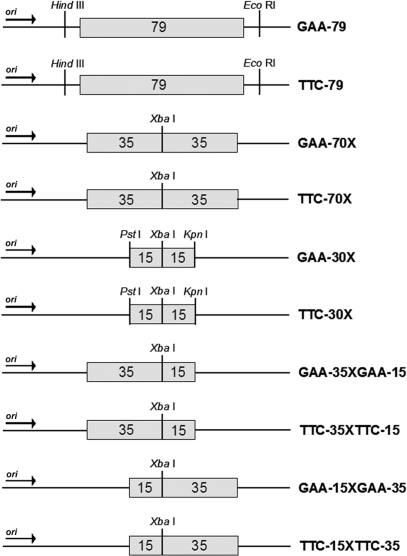Figure 1.
(GAA•TTC)n constructs used to analyze effect of DSB repair on triplet-repeat instability. pUC19 based constructs are shown containing either uninterrupted (GAA•TTC)79 or (GAA•TTC)n sequences engineered to contain a XbaI recognition sequence at specific locations within the repeat tract (see Materials and Methods section for details). Repeat tracts were cloned in both orientations relative to the origin of replication (arrow indicates direction of replication). Repeat-containing plasmids are depicted either in the ‘GAA orientation’ (e.g. GAA-79) or ‘TTC’ orientation (e.g. TTC-79), based on whether (GAA)n or (TTC)n serves as the lagging strand template, respectively. Numbers within the boxes indicate the length of the uninterrupted (GAA•TTC)n sequence.

